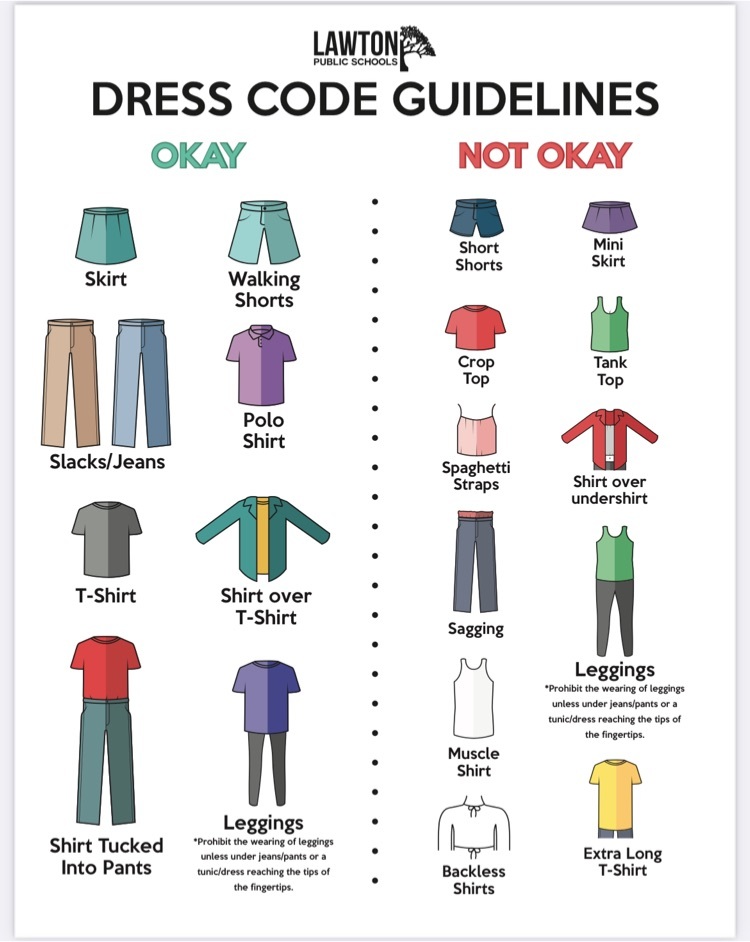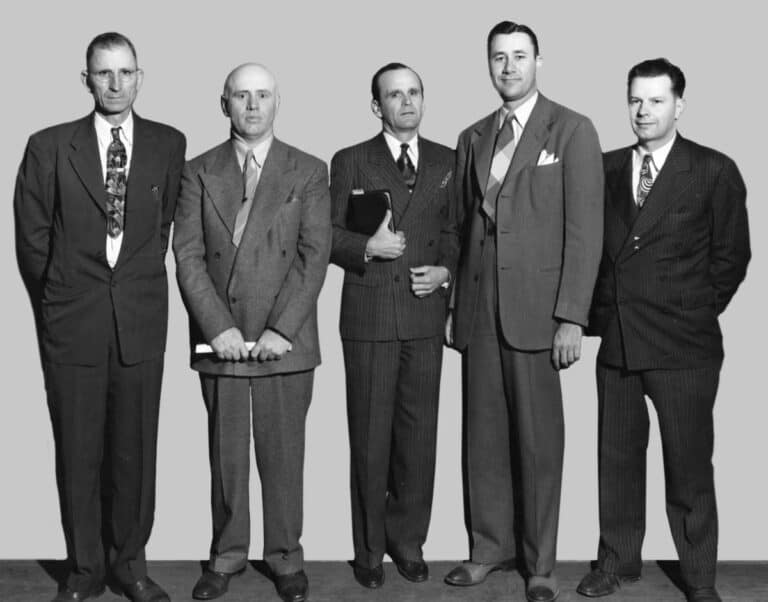The ALJC (Apostolic Light and Jesus Christ) dress code policy is in place to establish guidelines for appropriate attire within the organization. This policy is designed to reflect the values and beliefs of the ALJC community, promote professionalism, and ensure a respectful and inclusive environment for all members. In this article, we will delve into the background and purpose of the ALJC dress code policy, as well as its benefits.
Background and Purpose of the ALJC Dress Code Policy
The ALJC dress code policy has its roots in the organization’s commitment to upholding modesty and maintaining a sacred atmosphere. It is aimed at encouraging individuals to dress in a manner that is respectful, conservative, and in alignment with biblical principles. The policy seeks to foster an environment where individuals can focus on spiritual matters without distraction, while also promoting unity and a sense of belonging within the ALJC community.
Benefits of Implementing a Dress Code Policy
Implementing a dress code policy within the ALJC community offers several benefits:
- Promotes professionalism: A dress code policy ensures that members present themselves in a professional manner, which can enhance their credibility and reputation within the organization and in public settings.
- Enhances unity: By adhering to a common dress code, members of the ALJC community can feel a sense of unity and belonging. This fosters a supportive and inclusive environment where individuals can freely express their faith.
- Helps maintain focus on spiritual matters: A dress code policy reduces distractions and keeps the focus on worship and spiritual growth during religious services and events.
- Reflects values and beliefs: The dress code policy serves as a visual representation of the organization’s values and beliefs. It demonstrates a commitment to modesty, respect, and reverence.
By implementing a dress code policy, the ALJC community can create a cohesive and respectful environment that aligns with its core values and encourages individuals to live out their faith in both their actions and appearance.
Dress Code Guidelines
General appearance and grooming expectations
When it comes to the dress code at ALJC, there are specific guidelines to ensure a professional and respectful appearance. Employees are expected to maintain a neat and tidy appearance at all times. This means that personal grooming should be well-maintained, including clean and well-groomed hair, trimmed facial hair (for men), and appropriate hygiene.
Furthermore, employees are expected to dress in a manner that reflects professionalism and respect for the workplace. This includes wearing clean and wrinkle-free clothing, avoiding offensive or inappropriate graphics or slogans, and wearing closed-toe shoes for safety purposes.
Acceptable clothing options
ALJC has a business casual dress code policy, which allows for some flexibility while maintaining a professional appearance. Acceptable clothing options for employees may include:
- Casual pants: Khakis, dress slacks, or corduroys are acceptable. Jeans may be permitted on designated casual days.
- Skirts and dresses: Knee-length or longer skirts and dresses are preferred. Sleeveless options are acceptable as long as they are accompanied by a cardigan or blazer.
- Shirts and blouses: Collared shirts, blouses, or sweaters are appropriate. T-shirts, tank tops, and excessively casual tops should be avoided.
- Footwear: Closed-toe shoes are required for safety purposes. This includes loafers, dress shoes, flats, or other professional footwear.
It is important to note that while the dress code allows for some casual options, it is still important to maintain a professional appearance. Employees should always strive to dress in a manner that reflects the values and expectations of the company.
In conclusion, adhering to the dress code guidelines at ALJC ensures a professional and respectful work environment. By maintaining a neat and tidy appearance and choosing appropriate clothing options, employees can present themselves in a manner that reflects the company’s values and promotes a positive image.

Dress Code for Men
Appropriate attire for men
When it comes to adhering to the dress code, men need to ensure they are dressed appropriately for the occasion. Here are some guidelines to keep in mind:
- Formal Events: For formal occasions such as weddings or galas, men should opt for a tailored suit in a classic color like black, navy, or charcoal gray. Pair it with a dress shirt and a tie that complements the suit. Ensure the suit fits well and is not wrinkled or stained.
- Semi-Formal Events: For semi-formal events like business meetings or cocktail parties, men can go for a more relaxed look. A well-fitted blazer paired with trousers and a dress shirt is a great choice. You can also add a tie for a more polished appearance.
- Casual Events: When the dress code is casual, men have more flexibility in their outfit choices. Opt for well-fitting jeans or chinos, paired with a polo shirt or a button-down shirt. Avoid wearing t-shirts with logos or graphics for a more put-together look.
Footwear and accessories guidelines for men
- Footwear: Choose appropriate footwear that complements your outfit. For formal events, opt for polished leather dress shoes. For semi-formal or casual occasions, you can wear loafers, brogues, or clean sneakers.
- Accessories: Keep accessories minimal and classy. A nice watch, a belt that matches your shoes, and subtle jewelry are all acceptable. Avoid excessive accessories or anything that may be seen as distracting or inappropriate.
Remember, dressing appropriately shows respect for the event and the people attending. It also helps create a positive impression and boosts your confidence. By following these guidelines, men can confidently navigate various dress codes and ensure they are dressed appropriately for any occasion.

Dress Code for Women
Appropriate attire for women
When it comes to following the dress code, women have a variety of options to maintain a professional and polished look. Here are some guidelines to consider:
- Business Professional: For formal settings such as business meetings or conferences, women can opt for tailored suits or dresses in neutral colors like black, navy, or gray. Skirts should be knee-length or below, and blouses should be modest and not revealing.
- Business Casual: In more relaxed environments, women can explore a wider range of clothing choices. Slacks or dress pants paired with a blouse or sweater is appropriate. Skirts or dresses that are slightly less formal are also acceptable, as long as they are not too short or revealing.
- Casual Fridays: Some workplaces allow casual attire on Fridays. Women can dress in smart casual outfits, such as dark jeans or khakis with a blouse or polo shirt. It is important to still maintain a professional appearance and avoid overly casual items like ripped jeans or graphic t-shirts.
Footwear and accessories guidelines for women
- Footwear: Closed-toe shoes are generally recommended for professional settings. Women can wear heels, flats, or dressy loafers that are comfortable and match the overall look. It is best to avoid sneakers or sandals unless it is explicitly allowed.
- Accessories: Accessories should be understated yet stylish. Keep jewelry minimal and avoid anything too flashy or distracting. Handbags should be professional-looking and not overly large or casual. In terms of makeup and hairstyles, a natural and well-groomed appearance is preferred.
By following these guidelines, women can ensure that their attire aligns with the dress code while still allowing for personal style expression. Remember, the goal is to present a professional and polished image that reflects positively on both the individual and the organization.

Dress Code Exceptions
Special Circumstances for Dress Code Exceptions
While adhering to dress codes is generally important to maintain a professional image, there may be special circumstances where exceptions can be made. Understanding these circumstances can help create a more inclusive and accommodating environment for employees.
Some common special circumstances for dress code exceptions include:
- Religious Beliefs: Individuals may have specific religious requirements regarding their attire. It is important to respect and accommodate these beliefs to promote diversity and inclusivity in the workplace.
- Medical Conditions: Certain medical conditions may require individuals to wear specific clothing or accessories for health or safety reasons. Making exceptions for these individuals ensures their well-being and protects their rights.
- Disability Accommodations: Individuals with disabilities may require specific attire or adaptations to meet their unique needs. Providing dress code exceptions for these individuals is crucial to ensure equal opportunities and accessibility.
Process for Requesting an Exception
To request a dress code exception, employees should follow a clear and transparent process that allows for fair evaluation and decision-making. This process typically involves the following steps:
- Informal Discussion: Employees should initiate an informal conversation with their immediate supervisor or HR representative to discuss their specific circumstances and request for a dress code exception.
- Documentation: Employees may be required to provide supporting documentation, such as medical certificates or religious documentation, to validate their request for an exception.
- Evaluation: The request will be evaluated by relevant stakeholders, such as HR, management, or a designated committee, to assess its validity and potential impact on the organization.
- Decision: A decision will be communicated to the employee regarding their request for a dress code exception. If approved, employees should be provided with clear guidelines on what is acceptable within the exception.
By having a fair and transparent process in place for dress code exceptions, organizations can demonstrate their commitment to diversity, inclusion, and accommodating the unique needs of their employees.

Enforcement and Consequences
Methods for enforcing the dress code policy
The enforcement of a dress code policy is crucial to maintaining a professional and cohesive image for the organization. There are several methods that can be utilized to ensure compliance with the dress code policy:
- Clear Communication: One of the most important steps in enforcing the dress code policy is to clearly communicate the expectations and guidelines to all employees. This can be done through employee handbooks, orientation sessions, or regular reminders.
- Lead by Example: Managers and leaders within the organization should set a positive example by adhering to the dress code policy themselves. This helps to create a culture of compliance and sends a message that the policy is important.
- Regular Monitoring: Regular monitoring and observation can help identify any violations of the dress code policy. This can be done through routine checks or by designating specific individuals or teams to oversee compliance.
- Open Dialogue: Create an environment where employees feel comfortable discussing any concerns or challenges they may face in adhering to the dress code policy. This allows for open communication and can help address any potential issues before they escalate.
Consequences for non-compliance
In instances where employees do not comply with the dress code policy, it is important to have clear consequences in place. The specific consequences may vary depending on the severity of the violation and the organization’s policies. Some common consequences for non-compliance may include:
- Verbal Warning: A verbal warning serves as an initial reminder to the employee about the importance of adhering to the dress code policy. It provides an opportunity for them to correct their behavior.
- Written Warning: If non-compliance persists, a written warning can be issued to the employee. This serves as a more formal notification of the violation and outlines the potential consequences if the behavior continues.
- Progressive Discipline: Depending on the organization’s policies, progressive discipline may be implemented for repeated or severe violations. This may include further written warnings, temporary suspension, or even termination if the employee fails to improve their compliance.
- Re-education and Training: In some cases, employees may require additional training or re-education regarding the dress code policy. This can help them understand the importance of compliance and provide guidance on how to meet the requirements.
By establishing clear methods for enforcing the dress code policy and outlining the consequences for non-compliance, organizations can ensure a professional and cohesive appearance that aligns with their brand image.

Benefits of Dress Code Policy
Improved professionalism and company image
Implementing a dress code policy in the workplace can significantly improve professionalism and enhance your company’s image. By establishing guidelines for appropriate attire, you set a standard for how employees should present themselves to clients, customers, and business partners. A well-dressed workforce can create a positive impression of your organization, instilling confidence and trust in your brand.
A dress code policy also helps maintain consistency in how your employees represent your company. When everyone dresses professionally, it sends a message that your business is serious, dedicated, and focused on providing exceptional service. This consistency can contribute to building a strong and reliable brand image.
Enhanced team unity and cohesion
Implementing a dress code policy can foster a sense of unity and cohesion among your team members. When employees dress in a similar manner, it creates a sense of belonging and teamwork. It eliminates visual distractions that can arise from exaggerated or inappropriate clothing choices, allowing employees to focus on their work and collaborate more effectively.
Having a dress code can also promote equality in the workplace by eliminating any potential bias based on clothing choices. It ensures that all employees are treated fairly and judged based on their skills, experience, and performance rather than their appearance.
Overall, a dress code policy can contribute to a more professional and unified work environment, positively impacting employee morale and productivity.
Frequently Asked Questions
Common concerns and queries regarding the dress code policy
When it comes to the ALJC dress code policy, there can be several common concerns and queries. Here, we address some of the frequently asked questions to provide clarity on this matter.
- What is the ALJC dress code policy?
The ALJC dress code policy outlines the guidelines for appropriate attire to be worn by members and attendees during services, events, and other church-related activities. It aims to maintain a modest and respectful appearance while upholding the values and traditions of the ALJC community. - What are the specific requirements for dress code?
The specific requirements for dress code may vary depending on the context and nature of the event. However, generally, the dress code policy encourages modest clothing choices, such as knee-length or longer skirts and dresses for women, and slacks and collared shirts for men. It is advisable to avoid revealing or tight-fitting clothing that may distract others or undermine the decorum. - Can I wear casual attire to the ALJC?While the dress code policy promotes modesty, it does not necessarily mean formal attire is always required. Casual attire may be permitted for certain events or activities. However, it is best to check with the event organizers or consult the guidelines provided to ensure you adhere to the appropriate dress code.
- What should I do if I am unsure about the dress code for a specific event?If you are uncertain about the dress code for a specific event, it is recommended to reach out to the event organizers or consult the ALJC’s official communication channels. They will be able to provide you with accurate information regarding the dress code expectations to ensure you are appropriately dressed.
- Why does ALJC have a dress code policy?The dress code policy serves multiple purposes within the ALJC community. Firstly, it helps create an atmosphere of reverence and respect during services and events. Secondly, it ensures that all individuals feel included and comfortable by promoting modesty and avoiding distractions. Lastly, the dress code policy reflects the values and traditions of the ALJC community, fostering a sense of unity and shared identity.
By adhering to the ALJC dress code policy, individuals can contribute to maintaining a respectful and harmonious environment within the community while honoring the established values and traditions.
Conclusion
The ALJC dress code policy is a crucial aspect of maintaining a professional and cohesive image within the organization. By adhering to this policy, employees contribute to the overall branding efforts of ALJC and create a positive and consistent impression on clients, partners, and the public.
Summary of the ALJC Dress Code Policy
The ALJC dress code policy outlines specific guidelines for employees to ensure a clean, professional, and respectable appearance. The policy typically includes requirements such as appropriate attire for different roles and occasions, grooming standards, and any specific branding elements that need to be incorporated into employees’ attire, such as branded uniforms or name tags.
Encouragement for Employees to Adhere to the Policy
ALJC recognizes the importance of maintaining a strong brand image and encourages all employees to adhere to the dress code policy. By doing so, employees demonstrate their commitment to the organization’s values and professionalism. Adhering to the dress code policy also fosters a sense of unity and cohesion among team members, creating a positive work environment.
Management should regularly communicate and reinforce the importance of the dress code policy to ensure understanding and compliance among employees. Providing resources, such as dress code guidelines and examples, can help employees make appropriate choices in their attire. Recognizing and rewarding employees who consistently adhere to the dress code policy can also serve as positive reinforcement.
By implementing and enforcing the ALJC dress code policy, the organization can confidently present a consistent and professional image that aligns with its brand values.




